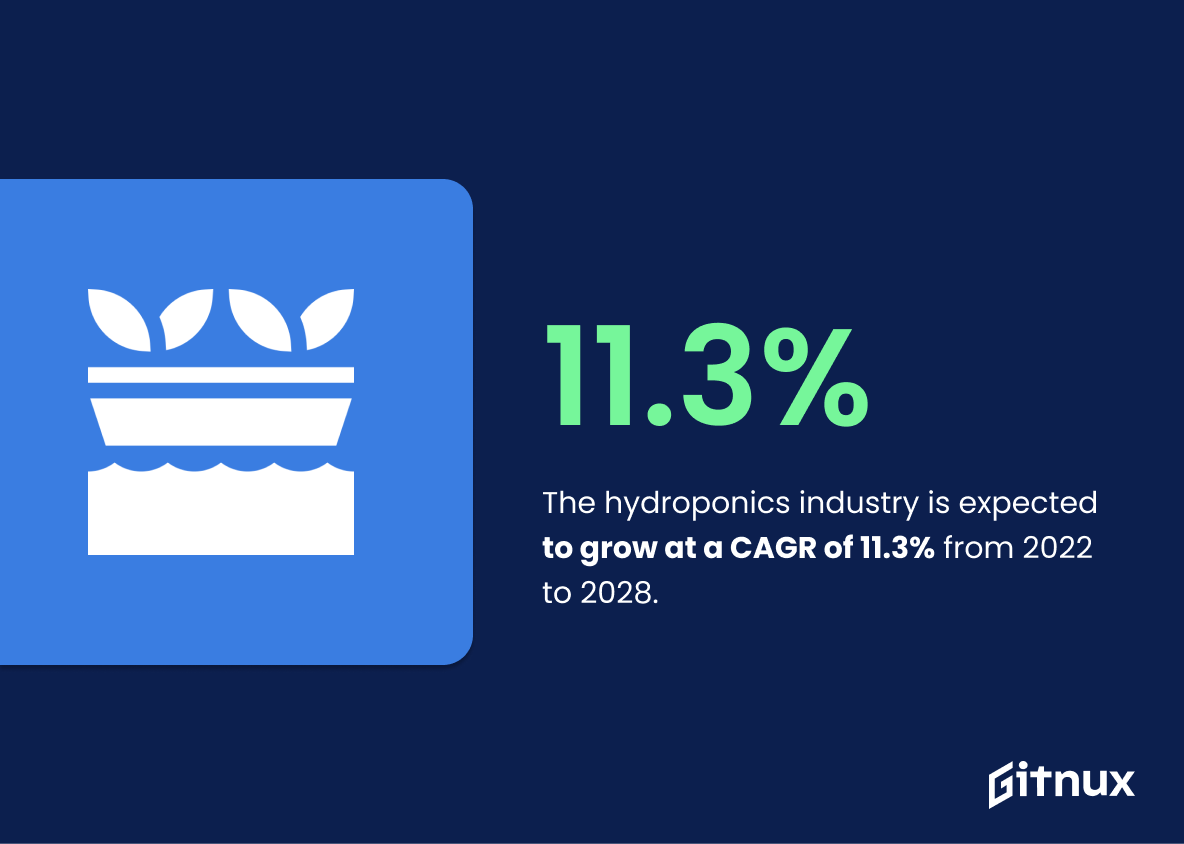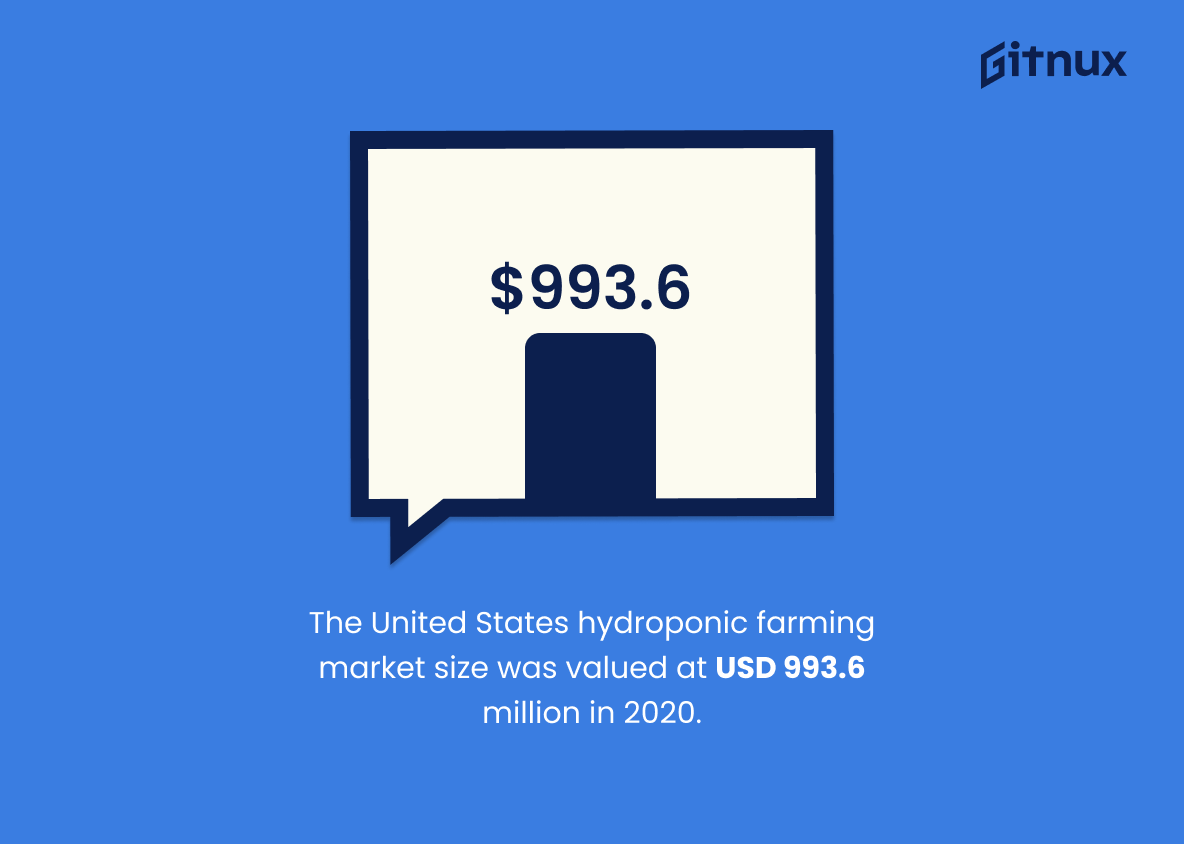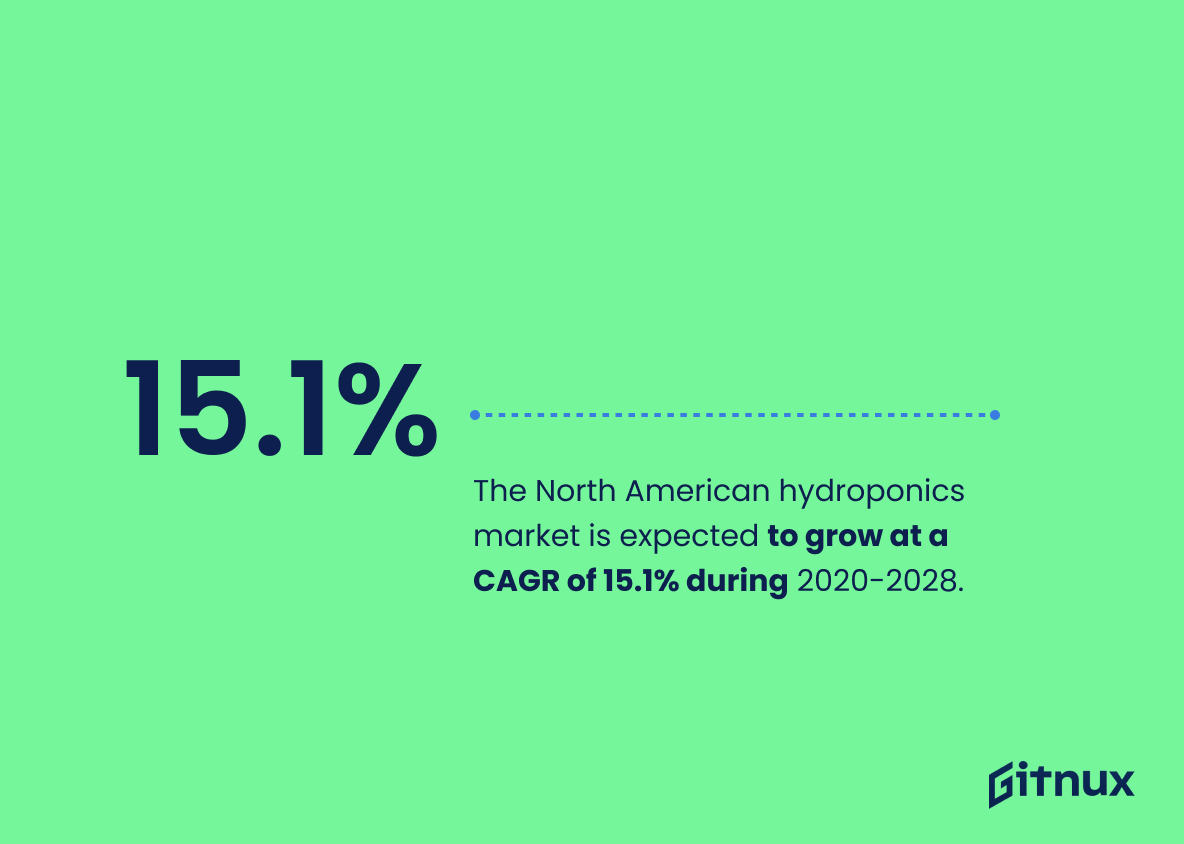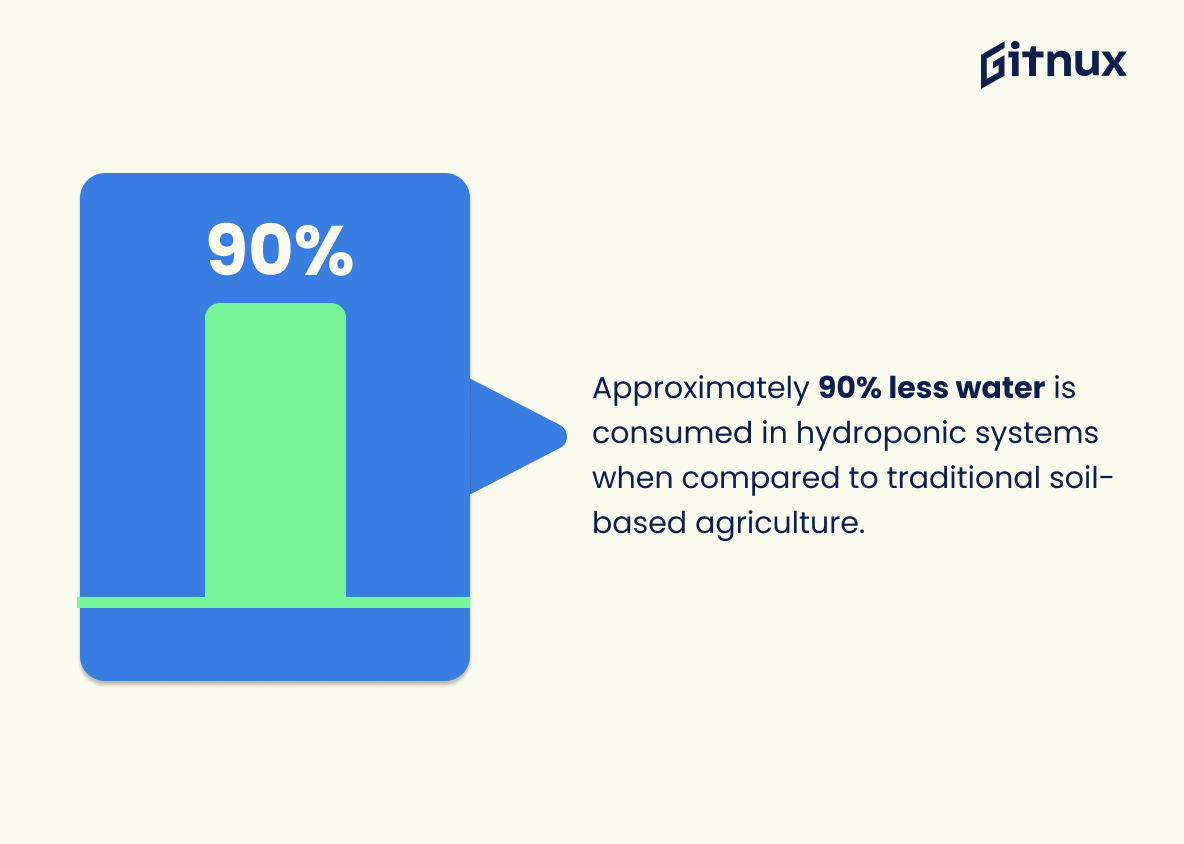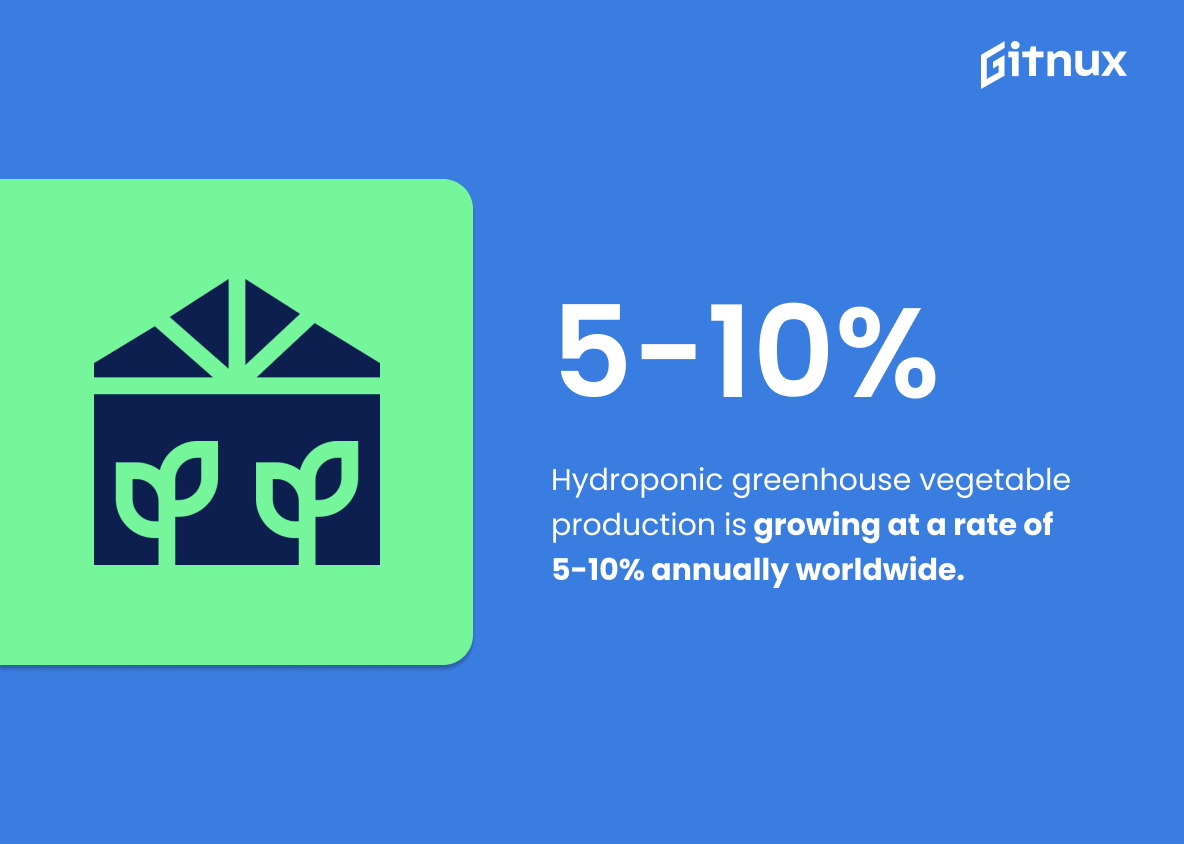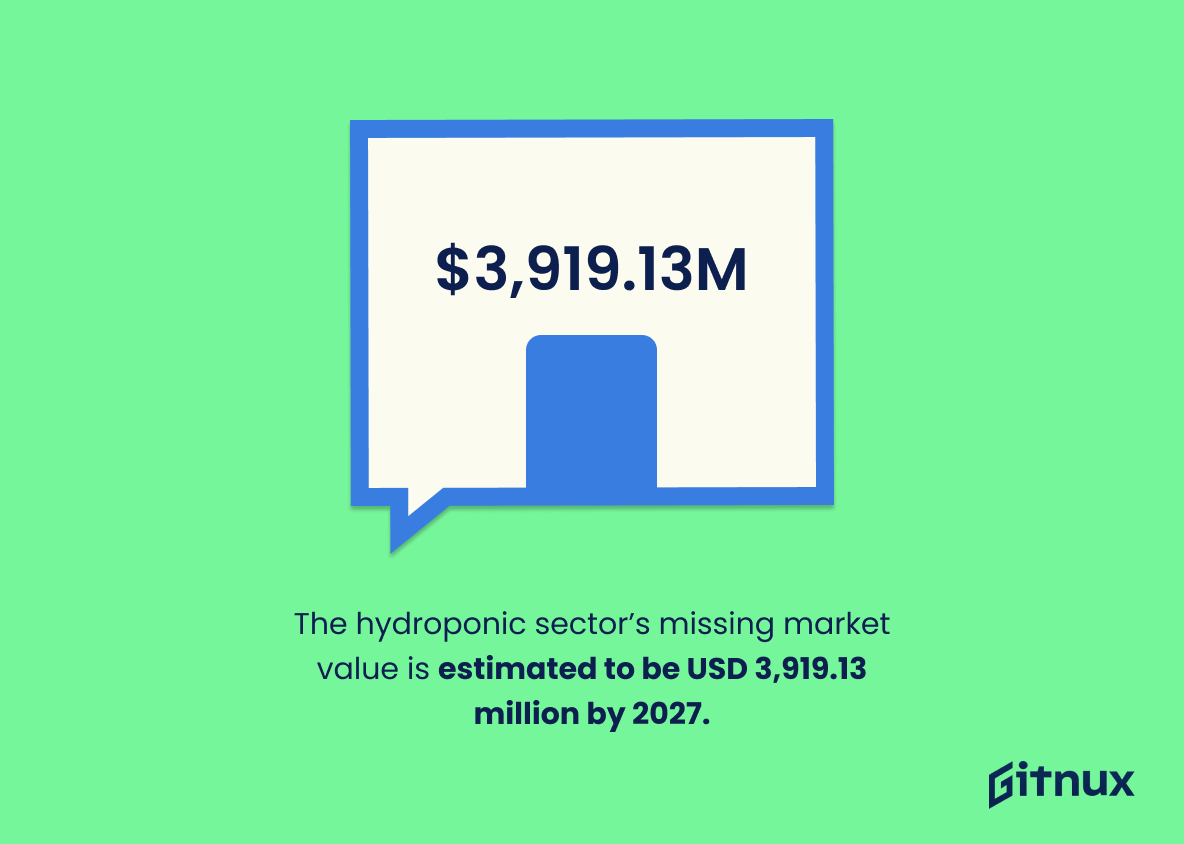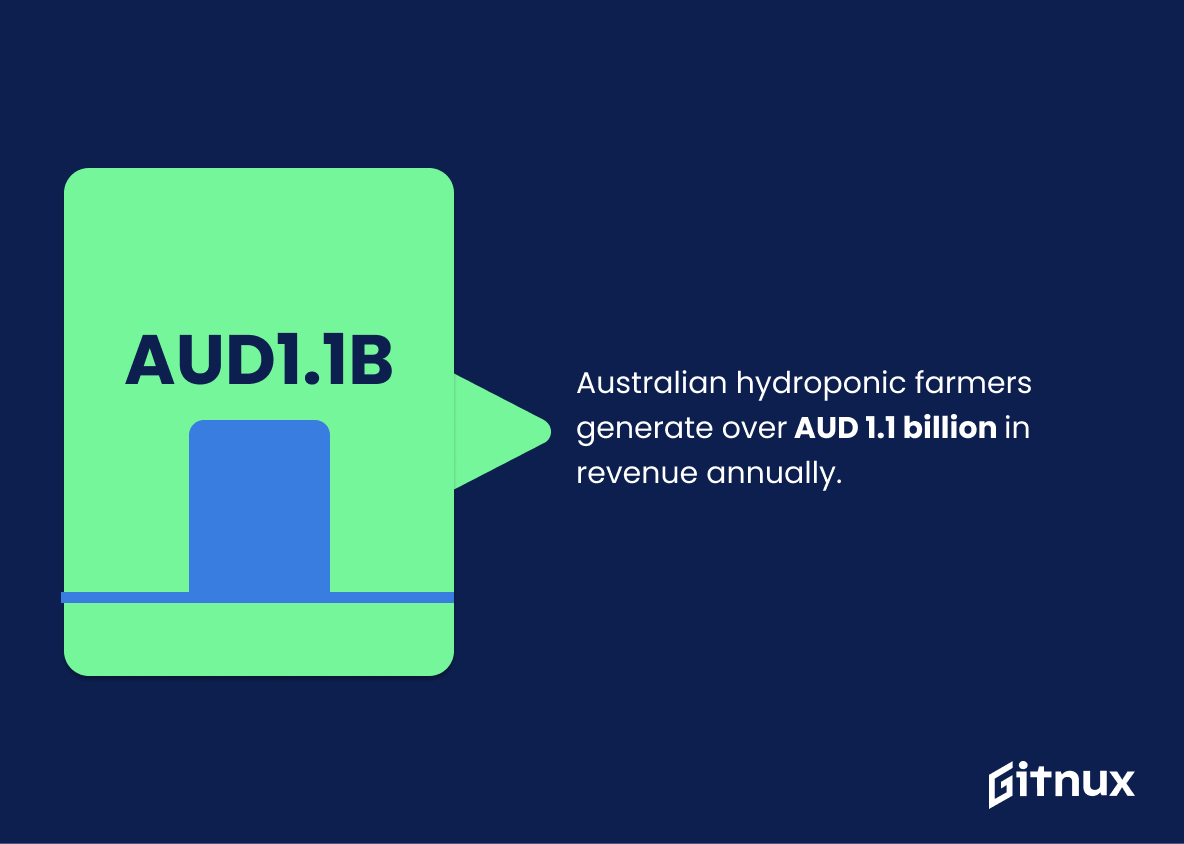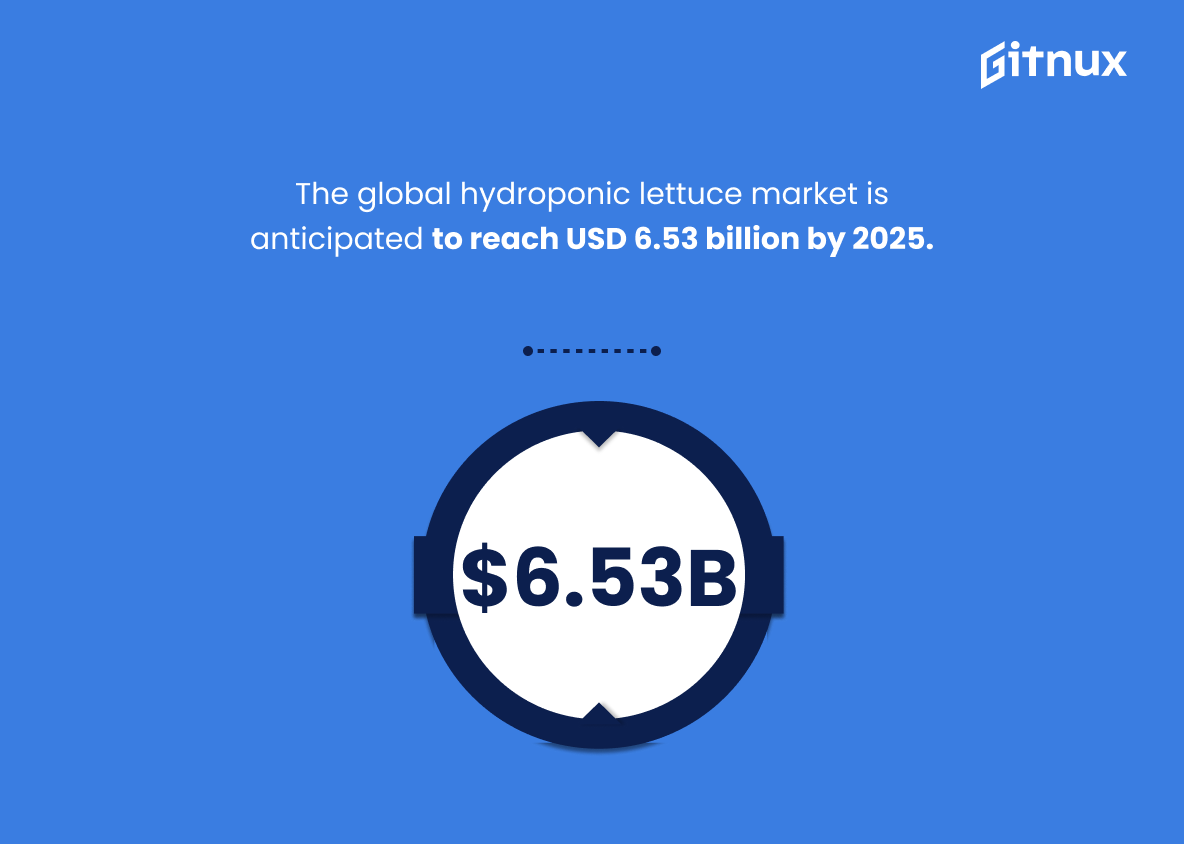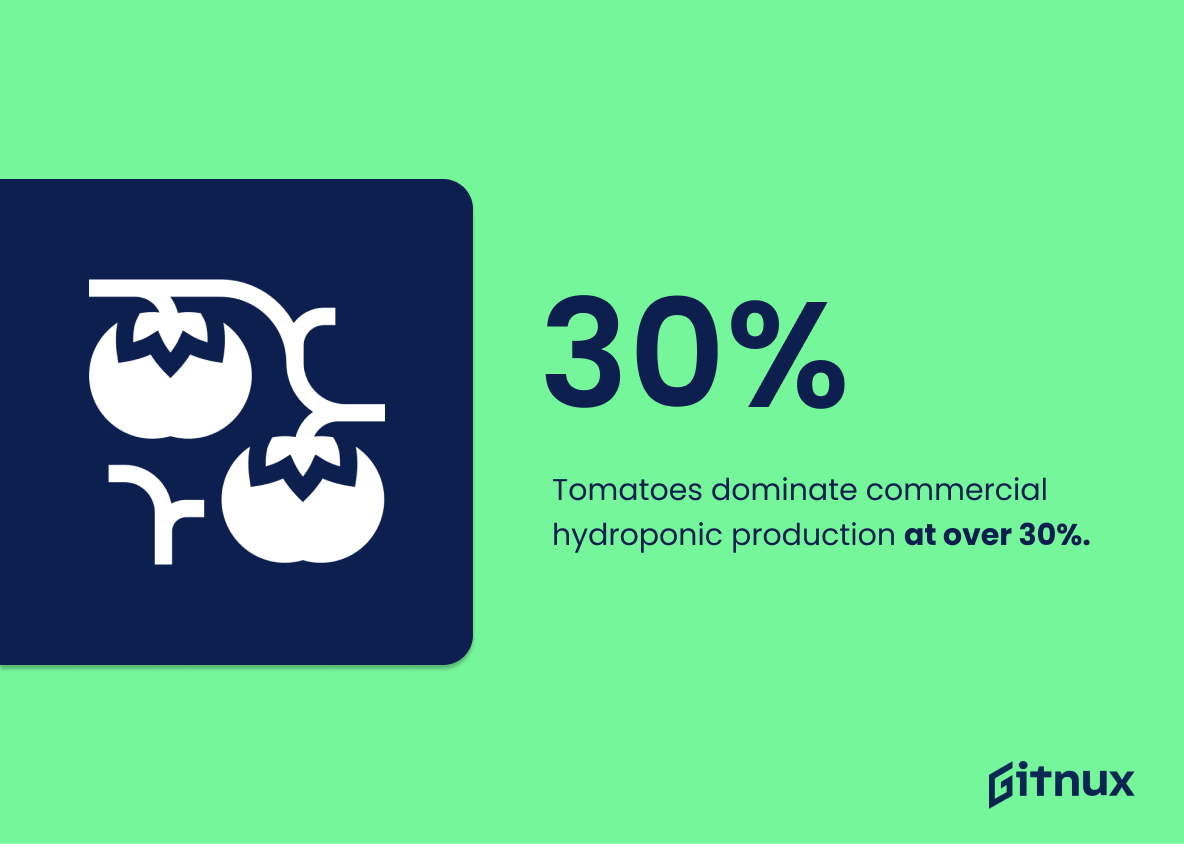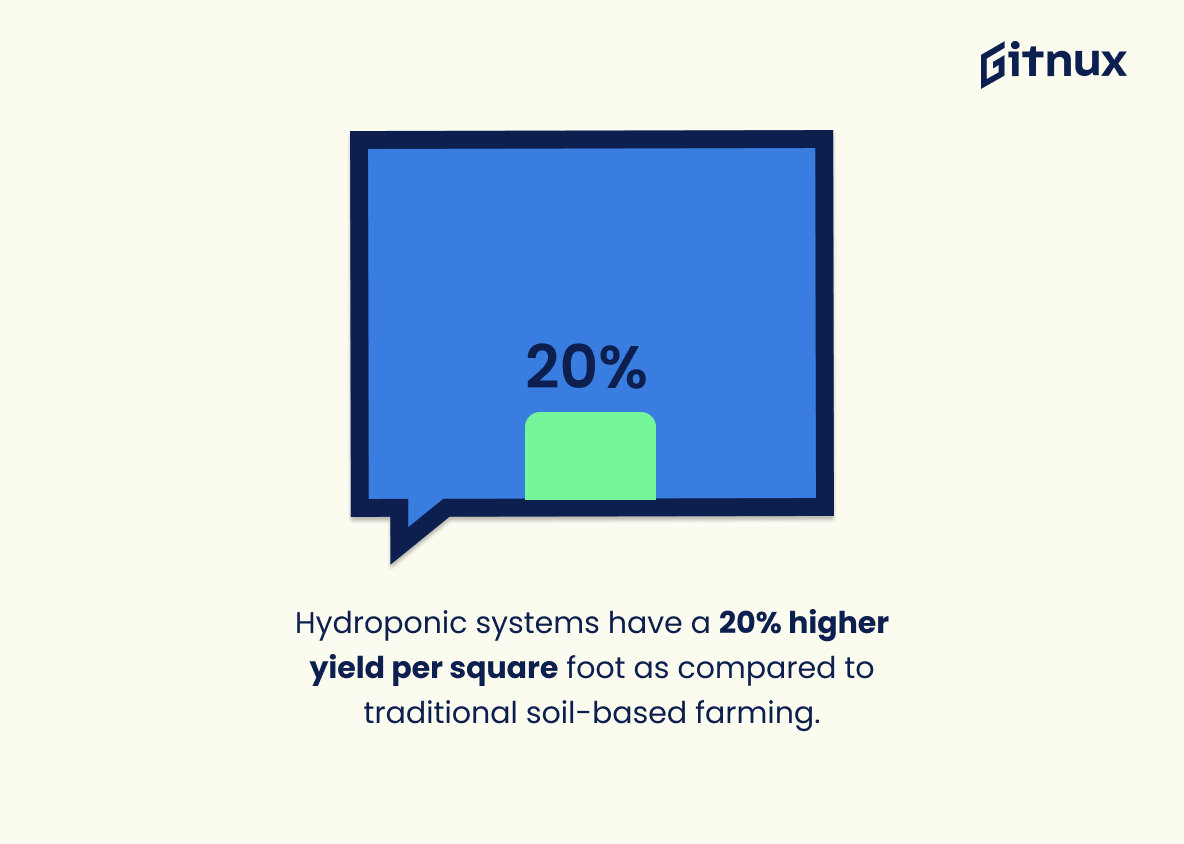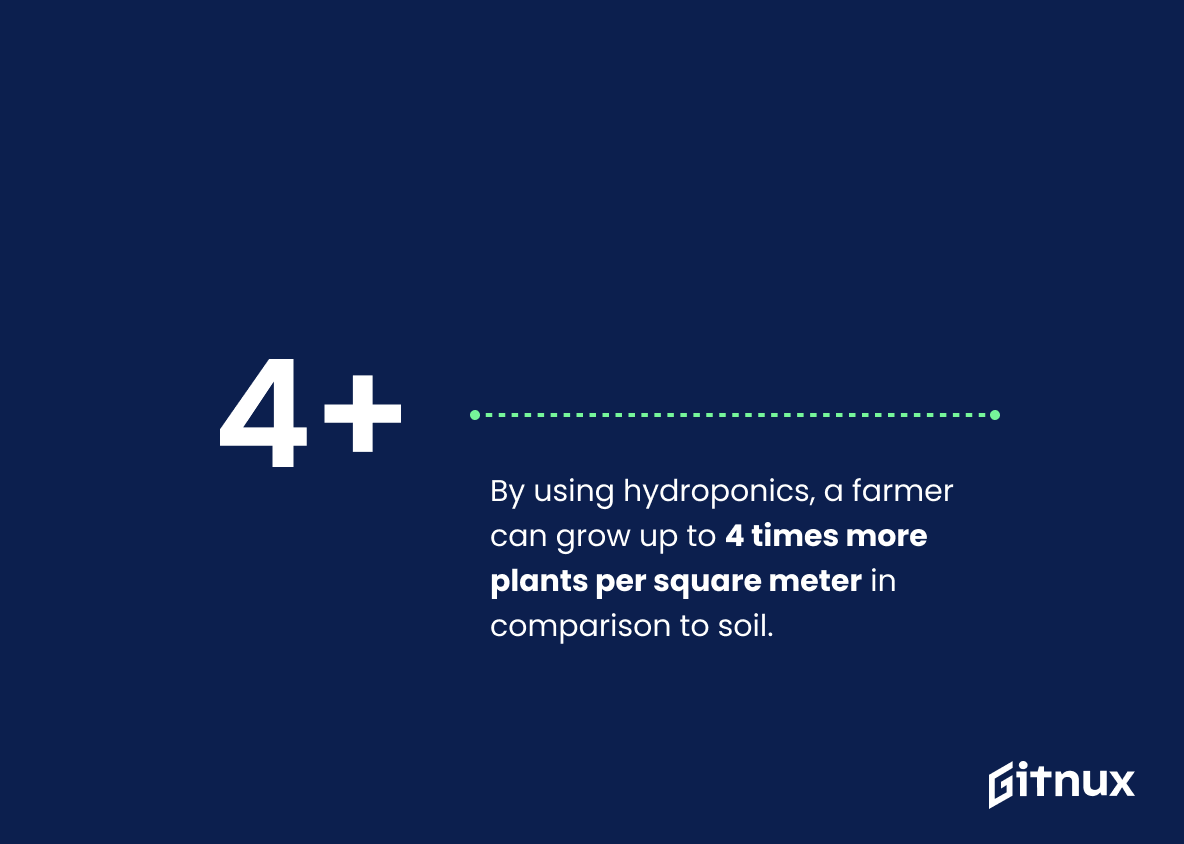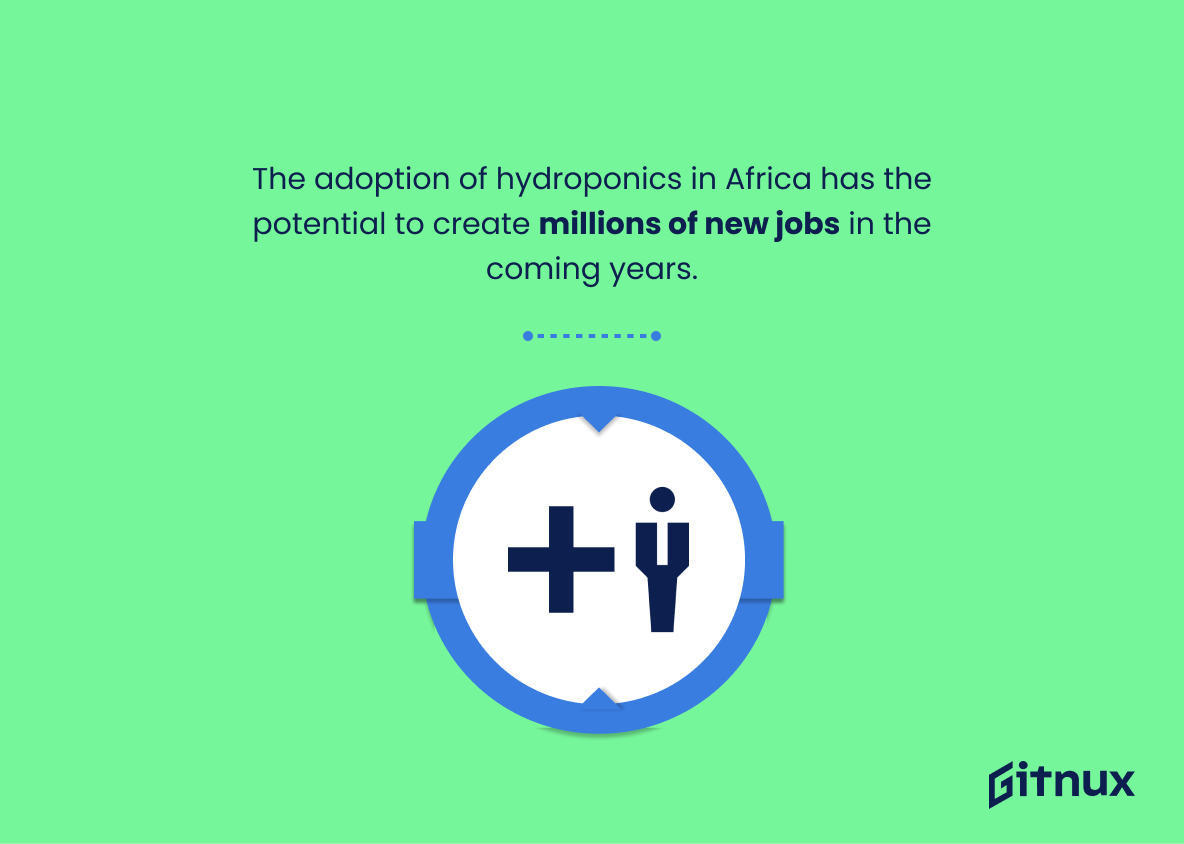The hydroponics industry is a rapidly growing sector that has seen tremendous growth in recent years. According to various statistics, the global hydroponic system market is projected to reach USD 16.03 billion by 2028 and Europe represents the largest market for this industry, accounting for 41% of its share. The compound annual growth rate (CAGR) of the hydroponics industry between 2022 and 2028 is estimated at 11.3%. In 2020, the United States’ hydroponic farming market size was valued at USD 993.6 million while North America’s overall CAGR during 2020-2028 stands at 15.1%. Additionally, approximately 90% less water consumption can be achieved with these systems when compared to traditional soil-based agriculture methods; there are over 9,000 commercial operations in North America alone as of 2019; medicinal herbs grown using this technology had a value of USD 1.76 billion in 2017; vegetable production worldwide grew 5-10% annually from 2019 onwards; Africa’s potential revenue from this sector could reach up to 2.3 billion dollars by 2025 and lettuce markets globally may hit 653 million dollars within four years time frame too. Furthermore, Belgium holds claim on having world’s biggest farm covering 213 thousand square feet area whereas tomatoes remain most popular crop among farmers due higher yields per square foot than other crops cultivated through conventional means – nearly 4 times more plants per meter squared. Hydroponic farming also helps reduce agricultural pollution levels significantly – almost 70%, creating millions new jobs opportunities across African continent along way.
This statistic is a testament to the immense potential of the hydroponic system market, indicating that it is set to experience significant growth in the coming years. It is a clear indication that the hydroponic industry is on the rise and is likely to become an increasingly important part of the global economy. This statistic is a valuable insight into the future of the hydroponic industry and should be taken into consideration when discussing the industry’s current and future prospects.
Europe represents the largest market for the hydroponics industry, accounting for 41% of the global share.
This statistic is a powerful indicator of the potential of the hydroponics industry in Europe. It shows that Europe is a major player in the global hydroponics market, and that there is a large potential for growth in the region. This could be a great opportunity for businesses looking to expand their operations in the hydroponics industry, as well as for investors looking to capitalize on the potential of the industry.
Hydroponics Industry Statistics Overview
The hydroponics industry is anticipated to grow at a compound annual growth rate (CAGR) of 11.3% between 2022 and 2028.
This statistic is a testament to the potential of the hydroponics industry, indicating that it is likely to experience significant growth in the coming years. With an anticipated CAGR of 11.3%, the hydroponics industry is poised to become an increasingly important part of the global economy. This makes it an attractive investment opportunity for those looking to capitalize on the industry’s growth. As such, this statistic is an important piece of information for anyone interested in the hydroponics industry.
The United States hydroponic farming market size was valued at USD 993.6 million in 2020.
This statistic is a powerful indicator of the immense potential of the hydroponics industry. It shows that the market size of the United States hydroponic farming industry is already worth nearly a billion dollars, and is likely to continue to grow in the coming years. This statistic is a testament to the fact that hydroponics is a viable and profitable industry, and is a great opportunity for entrepreneurs and investors alike.
The North American hydroponics market is expected to grow at a CAGR of 15.1% during 2020-2028.
This statistic is a testament to the potential of the hydroponics industry, indicating that it is expected to experience significant growth in the coming years. It is a sign that the industry is on the rise and that it is likely to become an increasingly important part of the agricultural landscape. This is an important point to consider when discussing the hydroponics industry and its potential for the future.
Approximately 90% less water is consumed in hydroponic systems when compared to traditional soil-based agriculture.
This statistic is a powerful testament to the efficiency of hydroponic systems. It highlights the potential for hydroponics to drastically reduce water consumption in agriculture, making it an attractive option for those looking to conserve resources. This statistic is especially relevant in the context of a blog post about Hydroponics Industry Statistics, as it demonstrates the potential of this industry to make a positive impact on the environment.
As of 2019, there are over 9,000 commercial, soil-less greenhouse operations in North America.
This statistic is a testament to the growth of the hydroponics industry in North America. It shows that the industry is thriving and that more and more people are turning to soil-less greenhouses to grow their crops. This is a clear indication that hydroponics is becoming an increasingly popular and viable option for farmers and gardeners alike.
Hydroponic greenhouse vegetable production is growing at a rate of 5-10% annually worldwide.
This statistic is indicative of the booming hydroponics industry, with production of hydroponic greenhouse vegetables increasing year on year. It is a clear sign that the hydroponics industry is thriving and is a great opportunity for those looking to invest in the sector. This statistic is a testament to the potential of the hydroponics industry and its ability to provide a sustainable and efficient way of producing vegetables.
The hydroponic sector’s missing market value is estimated to be USD 3,919.13 million by 2027.
This statistic is a powerful indicator of the potential of the hydroponic sector. It shows that the industry is expected to experience significant growth in the coming years, with a projected market value of nearly USD 4 billion by 2027. This is a clear sign that the hydroponic industry is an attractive investment opportunity, and one that should not be overlooked.
By 2021, Asia Pacific’s share in the global hydroponic farming market is expected to reach 18%.
This statistic is a telling indication of the potential of the hydroponics industry in the Asia Pacific region. It suggests that the region is poised to become a major player in the global hydroponic farming market, with a projected share of 18% by 2021. This is an exciting prospect for the industry, as it could open up new opportunities for growth and expansion.
Australian hydroponic farmers generate over AUD 1.1 billion in revenue annually.
This statistic is a testament to the success of the hydroponic farming industry in Australia. It highlights the immense potential of this sector and the significant economic impact it has had on the country. It also serves as a reminder of the importance of investing in this industry, as it has the potential to generate even more revenue in the future.
The global hydroponic lettuce market is anticipated to reach USD 6.53 billion by 2025.
This statistic is a testament to the immense potential of the hydroponic lettuce market. It shows that the industry is expected to experience significant growth in the coming years, indicating that it is a lucrative and promising sector. This is an important piece of information for anyone interested in the hydroponics industry, as it provides insight into the potential of the market and the opportunities it presents.
Tomato is the most popular crop in the commercial hydroponics industry, accounting for over 30% of hydroponic production.
This statistic is a testament to the immense popularity of hydroponic tomato production in the commercial hydroponics industry. It highlights the fact that hydroponic tomato production is a major component of the industry, and that it is a lucrative and successful endeavor. This statistic is important to consider when discussing the overall success of the hydroponics industry, as it demonstrates the potential for growth and profitability in this sector.
Hydroponic systems have a 20% higher yield per square foot as compared to traditional soil-based farming.
This statistic is a testament to the effectiveness of hydroponic systems, demonstrating that they can produce significantly more yield per square foot than traditional soil-based farming. This is an important point to consider when discussing the Hydroponics Industry, as it highlights the potential for increased productivity and efficiency that hydroponic systems can bring.
By using hydroponics, a farmer can grow up to 4 times more plants per square meter in comparison to soil.
This statistic is a powerful testament to the potential of hydroponics, demonstrating the immense productivity gains that can be achieved by utilizing this technology. It highlights the immense potential of hydroponics to revolutionize the agricultural industry, allowing farmers to produce more crops in a smaller area. This statistic is a key indicator of the potential of the hydroponics industry, and is an important piece of information for anyone interested in learning more about the industry.
Hydroponic farming enables farmers to reduce agriculture pollution by nearly 70%.
This statistic is a powerful testament to the positive environmental impact of hydroponic farming. By reducing agriculture pollution by nearly 70%, hydroponic farming is a viable solution for farmers looking to reduce their environmental footprint. This statistic is a key indicator of the potential of hydroponic farming to make a real difference in the fight against climate change.
The adoption of hydroponics in Africa has the potential to create millions of new jobs in the coming years.
This statistic is a powerful reminder of the potential of hydroponics in Africa to create a positive economic impact. It highlights the potential for job creation in the region, which could have a significant impact on the lives of many people. It also speaks to the potential of hydroponics to help alleviate poverty and improve the quality of life for those living in the region. This statistic is a powerful reminder of the potential of hydroponics to make a real difference in the lives of many people.
Conclusion
The hydroponics industry is a rapidly growing sector with immense potential for growth. The global market size of the hydroponic system is projected to reach USD 16.03 billion by 2028, and Europe represents the largest market share at 41%. Hydroponic farming has numerous advantages over traditional soil-based agriculture such as reduced water consumption, higher yields per square foot/meter, and lower levels of pollution. Additionally, it can create millions of new jobs in Africa while providing an alternative source of income for farmers worldwide. With its many benefits and increasing demand from consumers around the world, there’s no doubt that this innovative technology will continue to revolutionize modern agriculture in years to come.
References
0. – https://www.hortidaily.com
1. – https://www.apal.org.au
2. – https://www.globenewswire.com
3. – https://www.nature.com
4. – https://www.futuregarden.co.uk
5. – https://www.mordorintelligence.com
6. – https://www.researchandmarkets.com
7. – https://www.researchgate.net
8. – https://www.fortunebusinessinsights.com
9. – https://www.transparencymarketresearch.com
10. – https://www.verticalfarming.com
11. – https://www.grandviewresearch.com
12. – https://www.africapulse.com
13. – https://www.businesswire.com
14. – https://www.hortidaily.com
15. – https://www.towergarden.com
16. – https://www.greenerideal.com
